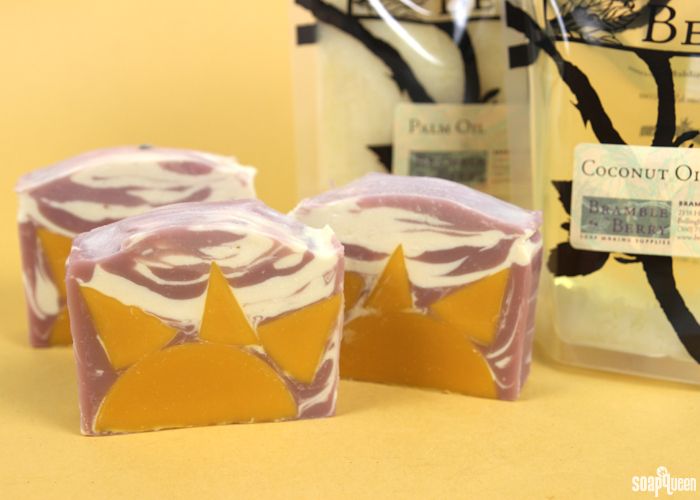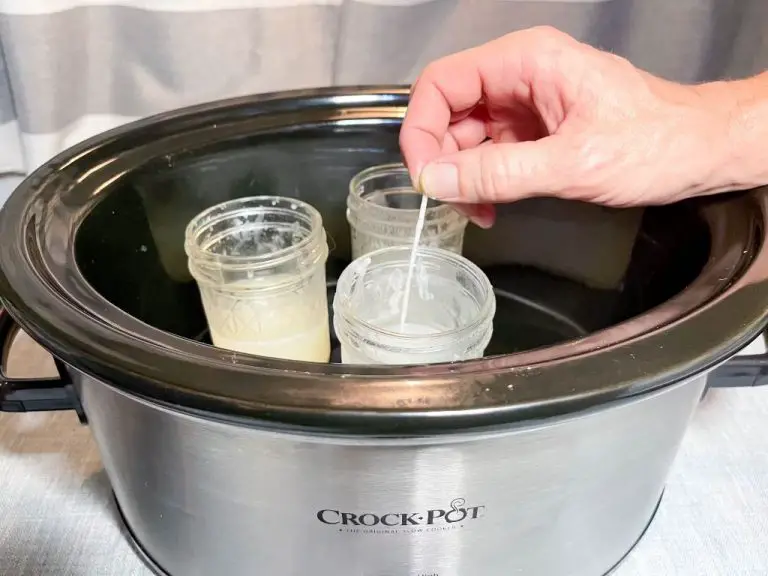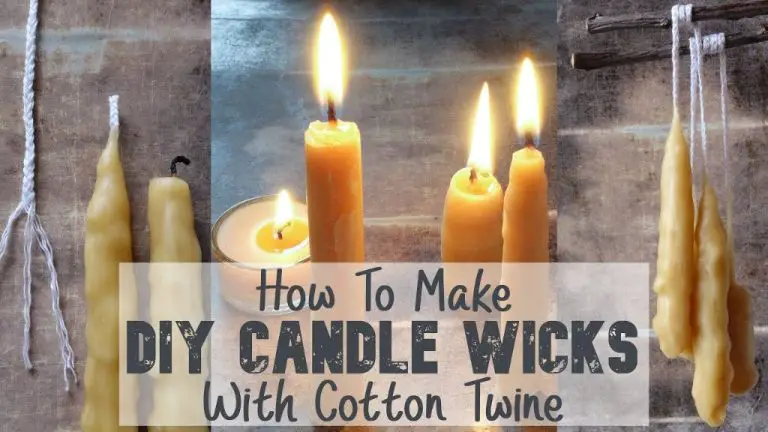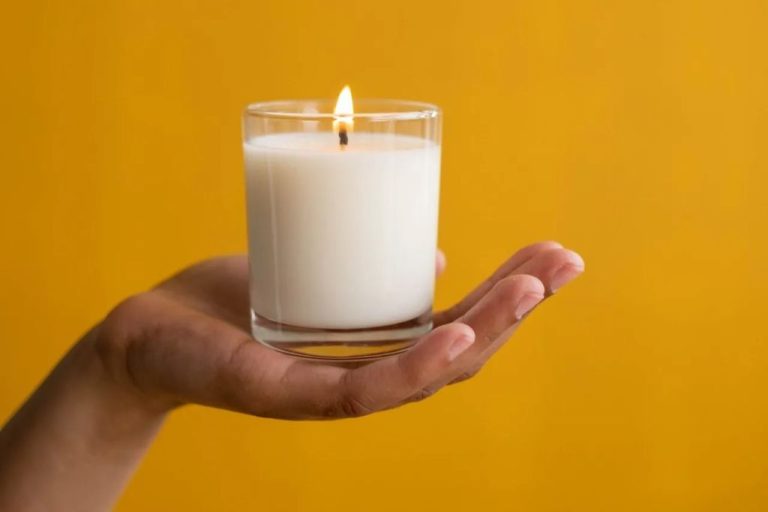Can You Add Essential Oils To Melted Wax?
Adding essential oils to melted wax is a popular way to create aromatic, therapeutic candles. The essential oils infuse the wax with their scents and benefits as the candle burns. Candles made with infused wax can promote relaxation, improve mood, and create an inviting atmosphere.
There are several key benefits to infusing wax with essential oils:
- The essential oils’ scents are released into the air as the candle burns, allowing you to experience aromatherapy benefits.
- It provides a simple method of scenting candles naturally.
- Infused wax candles often burn cleaner than candles with added synthetic fragrances.
- You can customize scented candles with your favorite essential oil blends.
The most common types of wax used for infusing with essential oils are soy wax and paraffin wax. Soy wax is all-natural and made from soybean oil. It burns cleanly with little soot or smoke. Paraffin wax is made from petroleum, so some prefer soy wax as a more eco-friendly option. Both work well for holding fragrance oils.
Safety Precautions
When working with melted wax and essential oils, it’s important to take proper safety precautions. Here are some tips:
Ensure proper ventilation. Melting wax and heating oils can produce fumes, so make sure to work in a well-ventilated area. Open windows or use a fan to circulate fresh air.
Take care to avoid spills and burns. Melted wax can cause severe burns. Work slowly and carefully when pouring hot wax. Allow wax to partially cool before adding oils. Have a dry towel nearby to wipe up spills.
Use carrier oils for skin-safe scents. Essential oils can irritate skin, so it’s best to dilute them in a carrier oil like coconut or jojoba oil before adding to wax. This helps make the scents skin-safe. A typical ratio is 1-2% essential oil to carrier oil.
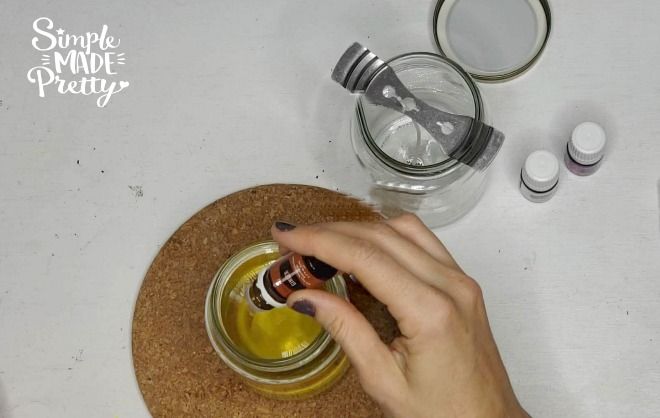
Make sure to keep flammables away from the melting wax to prevent fire hazards. Follow all usage instructions for candle making equipment. Take smart precautions when working with hot wax and oils.
Choosing Your Wax
When choosing a wax for essential oil candles, you have several options to consider including beeswax, soy wax, paraffin wax, and wax blends. Beeswax is a natural wax made by honey bees that has a high melting point around 144-147°F. It’s praised for its natural honey scent and sustainability as a renewable resource. However, beeswax is more expensive and can be challenging for beginners due to its brittle texture (1).
Soy wax is another popular natural option made from hydrogenated soybean oil. It has a lower melting point of 115-135°F making it easier to work with for beginners. Soy wax blends well with essential oils and comes in different varieties optimized for scent throw. The drawbacks are its soft texture that requires stabilizers and potential for frosting (2).
Paraffin wax is a synthetic petroleum-based wax known for excellent scent throw and easy mold release. However, some avoid paraffin for candles because it’s not from a renewable source. It has a wide melting temperature range of 115-150°F depending on the type. While brittle in its raw form, additives make paraffin wax soft, pliable, and ideal for essential oil candles (1).
When selecting your candle wax, consider the melting point, texture, scent throw, cost, renewable vs. non-renewable sources and ease of use. Test different waxes to find your preferred option for essential oil candles.
Sources:
(1) https://suffolkcandles.co.uk/blogs/candles/best-candle-wax-for-essential-oils
(2) https://homesick.com/blogs/news/what-is-the-best-wax-for-candle
Selecting Oils
When adding oils to wax for homemade candles, you’ll need to decide between using fragrance oils or essential oils. Fragrance oils are synthetic oil blends designed to mimic natural scents like vanilla or rose. They offer consistent, strong scents, but some find them less natural smelling than essential oils.
Essential oils are extracted from plants and flowers. They provide authentic, natural aromas, but the scent strength can vary. Popular options include lavender, peppermint, eucalyptus, lemon, and tea tree.
When selecting oils, consider the scent category you want. Floral oils like jasmine and rose provide sweet, delicate aromas. Herbals like eucalyptus and rosemary offer an earthy smell. Citrus oils such as lemon, grapefruit, and orange have fresh, energizing scents. Spice oils like cinnamon and clove have a warm, cozy aroma.
The oil strength also varies. Stronger oils like peppermint will overpower lighter ones like chamomile. Start with a small ratio of oils to wax when blending. Smell the wax mixture before pouring to ensure the fragrance is not overpowering.
Blending Oils
When adding essential oils to candle wax, it’s important to blend the scents properly to achieve the desired aromatic effect. Selecting complementary oil combinations is an art that takes some experimentation. Here are some tips for blending oils:
Start by choosing a dominant oil as the base scent, such as lavender, citrus, or mint. Then complement it with accent oils in smaller amounts. For example, blend 3 parts lavender with 1 part lemon for a bright, relaxing scent. Popular oil pairings include:
- Lemon + Lavender
- Orange + Cinnamon
- Rosemary + Eucalyptus
- Peppermint + Wild Orange
Take care not to overdo stronger scents like cinnamon, clove, and peppermint which can overpower lighter scents. A good rule of thumb is a maximum of 15% for strong oils.
Scent categories like floral, herbal, citrus, and woodsy generally combine well. But be wary of blending too many competing scents resulting in an unpleasant mélange. Start with 2-4 oils in different proportions to find pleasing balances.
Refer to fragrance blending charts for recommended oil combinations and ratios. When in doubt, make small test batches to perfect your signature scent blend before scaling up.
Adding Oils to Wax
When adding essential oils to melted wax, it’s important to follow proper safety precautions. The flash point of an oil is the lowest temperature at which the oil can ignite, so you’ll want to make sure the wax is below that temperature before blending. According to CandleScience, it’s recommended to add oils at 185°F or lower, regardless of oil flash point, for safety.
A good starting ratio is 0.5-1% of oil per pound of wax. For example, use 0.5-1oz of oils per 1lb of wax. You can adjust the amount depending on how strong you want the scent. More oils will lead to a stronger aroma. Consider blending multiple oils together for a more complex scent.
After adding oils, stir thoroughly to fully incorporate them. Let the mixture cool, stirring occasionally, until it reaches 115-120°F. At this point, the wax will start to thicken and hold the scent better. Avoid cooling too quickly or you may end up with oil separation.
For detailed instructions and safety tips, refer to:
https://www.runtoradiance.com/easy-diy-essential-oil-candles/
Pouring and Curing
Proper pouring and curing temperatures are crucial for achieving the best results when making candles with essential oils. According to experts, the ideal pouring temperature is between 175-185°F (https://www.candlescience.com/how-to-make-soy-candles-with-essential-oils/). This allows the wax to fully coat the wick and prevents bubbles from forming on the surface of the candle. Pouring at temperatures higher than 185°F can burn off some of the essential oil scent.
Allowing time for the candle to cure is also very important. Curing gives the essential oils time to fully bind with the wax, which helps maximize scent throw and burn time. Most experts recommend allowing soy candles to cure for 1-2 weeks before burning (https://www.thehealthymaven.com/homemade-aromatherapy-candles/). During the curing process, make sure candles are stored in a dry, room temperature area away from drafts so the scent profile remains stable.
Testing the scent periodically as the candle cures can help determine if more aroma is needed. If the scent seems light, you can carefully remelt the top layer of wax and add a few more drops of essential oils as needed. But take care not to overdo it, as too much essential oil can cause issues like weeping or smoking.
Making Rolled Candles
One popular method for making candles with essential oils is to create rolled sheet candles. This involves pouring melted wax onto a flat surface to create a thin sheet. Once cooled, the wax sheet can be rolled around a wick to create a candle.
Start by melting beeswax or soy wax in a double boiler. Once melted, add your chosen essential oils, following the safety guidelines above. The National Candle Association recommends adding 0.5-1.5% fragrance or essential oils by weight. Stir well to fully incorporate.
Next, pour the wax onto a flat surface lined with parchment paper. Try to create an even layer about 1/4 inch thick. Allow it to fully cool and harden before handling. Once solid, gently peel the wax sheet off the parchment.
To form your candle, place a wick along one edge of the sheet. Carefully roll the sheet of wax from the end with the wick until your candle is rolled. Make sure to roll evenly so the bottom is flat. The width of your sheet will determine the diameter of the finished candle.
Use a sharp knife to trim the bottom edge so it is flat and even. You can slice off pieces to create candles in specific sizes. Allow to cure for 24-48 hours before lighting. Refer to curing instructions above.
For rolling tips and visual guidance, see this video: How to Make Beeswax Sheet Candles With Essential Oils
Troubleshooting
When blending oils into candles, there are a few common issues that may arise. Here are some troubleshooting tips for the most frequent problems.
If you notice the scent fades quickly or does not stick well, try using less essential oil (usually 2-5% of wax by weight is recommended). Certain oils like citrus tend to be more volatile. You can also try adding a small amount of fragrance oil, which helps anchor the scent. Make sure to thoroughly stir for at least 2 minutes when adding oils.
If the wax is not hardening properly, the ratio of oils may be too high. Try reducing the amount of oils to 1-3% of wax. Make sure to fully heat and stir the wax to 185-200F before adding oils. You can also try a wax blend with a higher melt point.
Candles can discolor for a few reasons. Some essential oils naturally cause discoloration over time. You can try oils like lemon, bergamot, or tea tree which have less impact. Discoloration can also occur if the candle gets too hot. Use proper wicking so the flame does not get too large. Trim wicks to 1⁄4 inch before burning to prevent sooting.
Storing and Enjoying
Proper storage is crucial for preserving your essential oil infused candles and ensuring they have a long shelf life. Essential oils are volatile, so they will evaporate and lose potency over time. According to CandleScience, essential oils should be kept in an airtight container and refrigerated separately from food to prevent cross-contamination of flavors. Wax melts with essential oils should also be stored in an airtight container in a cool, dry place to help retain scent.
Essential oil candles and wax melts can be used to create pleasant ambiance and aromatherapy benefits. Burn your candles in areas where you want to experience the scent, such as living rooms, bedrooms, and bathrooms. Wax melts can be placed in oil burners to gently diffuse the aroma. You can also experiment with blending different essential oils to create custom scents that promote relaxation, energy, focus, or other desired effects.


